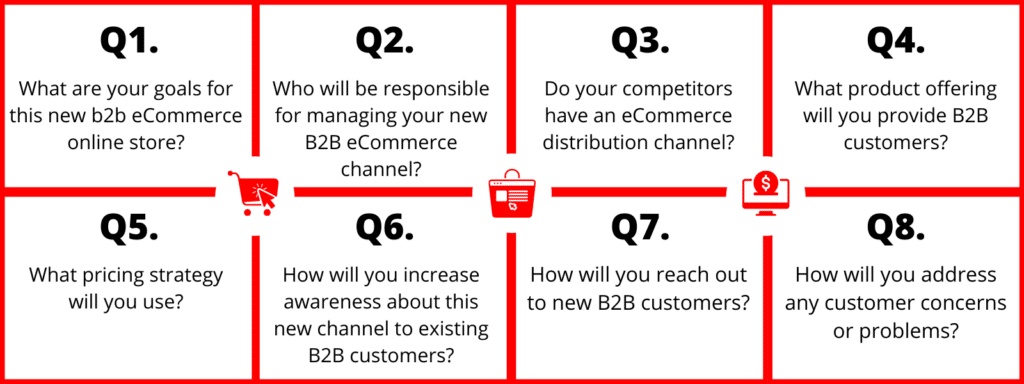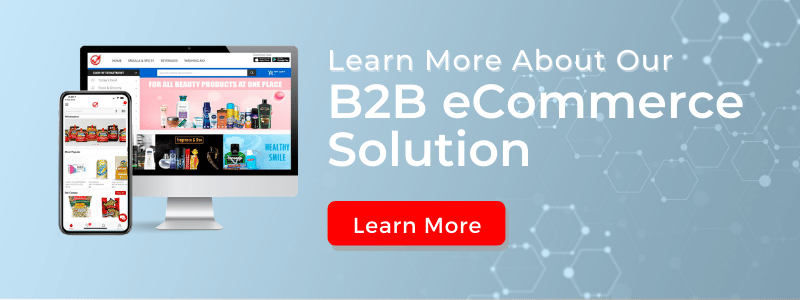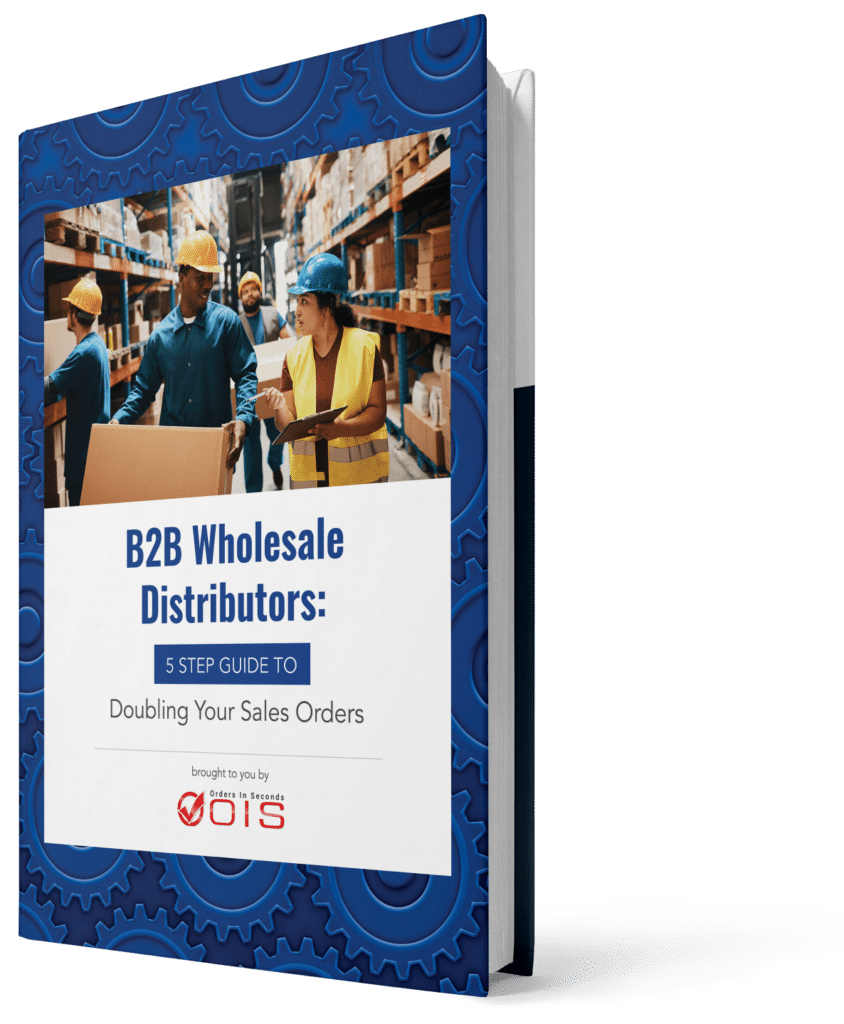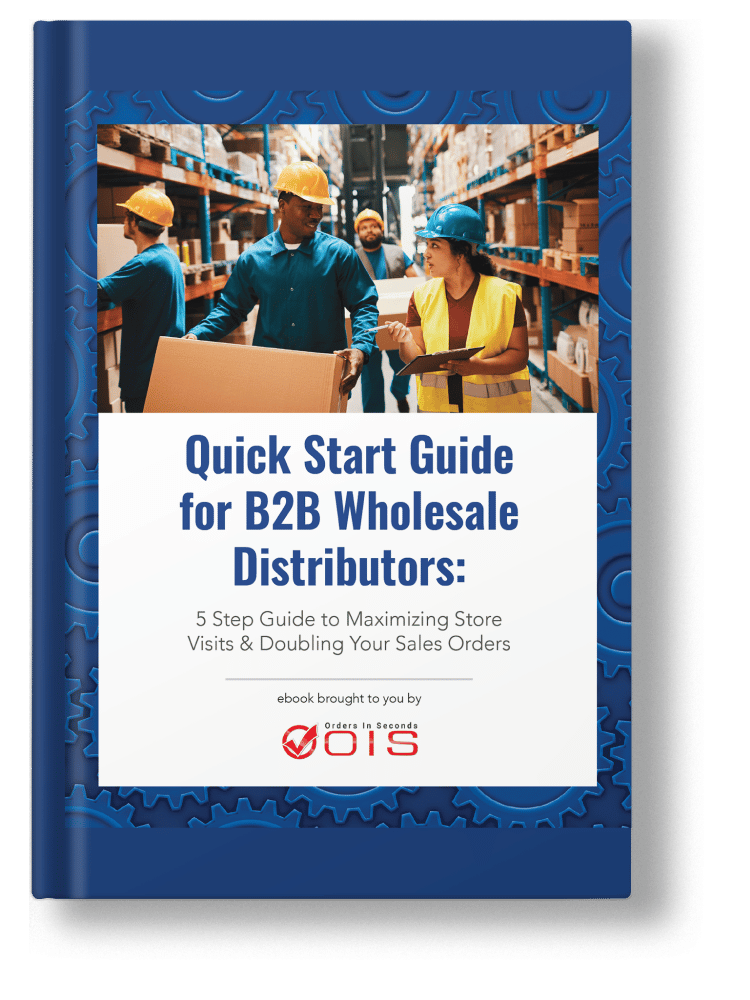The effects of the COVID pandemic on the business-to-business (B2B) supply chain have forced many wholesale distributors and manufacturers to invest in a B2B eCommerce distribution channel. To meet customer demands for convenient online purchasing, quick access to product information, and contactless buying options for safety in an increasingly digital age.
Understanding and implementing eCommerce can be overwhelming for small to midsize B2B businesses just trying to survive the emotional and financial impacts post COVID.
Don’t worry. This is why I have created this simple B2B eCommerce guideline, to inform you about:
- What is B2B eCommerce?
- Understanding the Benefits and Challenges of B2B eCommerce
- 3 Key Steps to Starting a B2B eCommerce Distribution Channel
But first, let’s examine what B2B eCommerce means.
What is B2B eCommerce?
B2B eCommerce is the sale of goods and services through the internet (on a web or mobile sales app) to other businesses.
For example, let’s look at the Coca-Cola company that manufactures Coca-Cola soda beverages.
The soda beverages are sold to a distributor or wholesaler who then sells the drink to a grocery store, deli, bodega, restaurant, or retail store (a.k.a other businesses).
An eCommerce distribution channel allows distributors and wholesalers to create an online store and mobile app for their customers (a.k.a grocery store, deli, restaurant, etc..) to purchase the Coca-Cola soda beverages directly.
Therefore, eliminating the need to have a field sales representative physically visit a customer to place an order, saving time and money for the seller (a.k.a your B2B business) and buyer (a.k.a your customers).
Freeing up sales reps to open new store accounts while continuing to build relationships with store owners and managers, ensuring shelves are always stocked and any concerns addressed. It’s a win-win for both parties.
Now that you understand what B2B eCommerce means, let’s review the benefits and challenges of starting a new sales channel for your wholesale or distribution business.
Benefits for Your B2B Business
- Sell products 24 hours, 7 days a week
- Boost your online sales
- Reach a larger customer geographical location on the internet
- More control over the selling process and tracking with an online website and mobile app as a point-of-sale (POS)
- More control over labor costs and inventory management
- Lower overhead cost by eliminating additional warehouse locations
- Increase customer satisfaction by providing greater convenience to your customers
Challenges for Your B2B Business
- The use of older technology can prevent businesses from providing a modern, user-friendly experience to their customers
- Fear that implementing an eCommerce distribution channel will disrupt the “normal” ways of doing business
- Implementing an eCommerce distribution channel will take too long and results will be slow
- Upfront investment to create an eCommerce distribution channel will be too costly
- Lack of personnel to run the eCommerce planning and implementation
The need for eCommerce is here to stay. So, it’s important to acknowledge that adding a new distribution should be considered a long-term source of growth for your business, not just an addition to your current offering.
According to McKinsey & Co, more than 75% of B2B buyers prefer online purchasing and remote sales interactions instead of in-person ones, with only 20% of B2B counting on a return to in-person sales (post-COVID).
The digital shift to doing business online is ever-present and demonstrates a great opportunity for wholesalers and distributors to start a whole new revenue stream.
Now that you understand why starting an eCommerce distribution channel is so important, let’s review the keys steps for implementation:
3 Key Steps to Starting a B2B eCommerce Distribution Channel
Step 1: Develop an eCommerce Strategy For Your B2B Company
Before you select an eCommerce company to work with or begin laying out design ideas for what you want your online store to look like, it’s important to create a well-defined written plan for your B2B company about how this channel will function successfully.
Think of your strategy like a roadmap, that will provide directions on how to maintain and grow your online business long-term. These are a few points to consider:

Q1) What are your goals for this new b2b eCommerce online store?
-Ex. Goal – expanding product distribution
Q2) Who will be the point person responsible for managing your new B2B eCommerce channel?
-Ex. Hire or use someone internal
Q3) Do your competitors have an eCommerce distribution channel?
-Ex. Research what’s working for your competitors
Q4) What product offering will you provide B2B customers?
-Ex. Will you offer all your products?
Q5) What pricing strategy will you use?
-Ex. Decide on a pricing strategy, also consider free shipping incentives
Q6) How will you increase awareness about this new channel to existing B2B customers?
-Ex. Via email, social media, phone calls, through sales reps
Q7) How will you reach out to new B2B customers?
-Ex. Via social media, paid advertising
Q8) How will you address any customer concerns or problems?
-Ex. Consider customers service
Uhuru.com has an easy-to-follow plan called “Guide to Developing an Effective eCommerce Strategy” that can provide a good starting point for developing your eCommerce strategy.
Step 2: Select the Right Partner with Years of Experience in eCommerce
This step is crucial to your eCommerce success, especially as a B2B company.
Do your research when it comes to identifying a partner that will help create and implement an eCommerce store for your business. These are a few points to consider:
Years of Experience with B2B – make sure they have years of eCommerce experience and knowledge of how B2B companies work. Many eCommerce companies offer services, including creating your online store and mobile app that cater more to business-to-consumer (B2C), which is very different from B2B.
Easy ERP System Integration – You don’t want to spend time and money working with a partner who in the end cannot work with your internal ERP system seamlessly. If an eCommerce business cannot integrate with your current ERP system, it’s a deal-breaker and time to move on.
Great Customer Service – I can’t emphasize this point enough. You can create the best website of all time but unfortunately, things can still go wrong. Like out of the blue your website goes offline or does not function properly. When this happens, it’s important to pick an eCommerce partner that provides good customer service with a “live person”, not a robot or email address. You want to make sure any incidents can be corrected immediately, not within a few hours or days.
Step 3: Have a Clear Operations and Distribution Plan
Lastly, when creating your eCommerce strategy make sure to include a clear plan of how your orders will be received by your company and delivered to customers.
Many times, businesses create their website and go live but never consider the logistics of how their products will be distributed. Resulting in a mistrust of your website, negatively impacting your business goals and reputation.
Especially, when many customers expect the same level of service and delivery times, as they receive from B2C marketplaces, such as Amazon or Walmart.
Now that you understand what B2B eCommerce means, the advantages and challenges, as well as steps to start your eCommerce business, are you ready to start?
Of course, you are!
Now, it’s time to EXECUTE! EXECUTE! EXECUTE!
Once the strategy is established you must implement your eCommerce plan. This is where many companies fail because they concentrate too much on planning, and delay carrying out their plans.
Remember there is always a risk to any new endeavor or investment you decide on for your business but the risk of doing nothing is greater.
Feel confident that eCommerce is here to stay and there are many service providers available to help you every step of the way.
Orders in Seconds (OIS) is a software solution company with over 15 years of experience that offers affordable eCommerce services to small to midsize wholesale distributors and manufacturers.
OIS provides exceptional customer service and the very best technology to all of its partners.
OIS understands the challenges faced by B2Bs in this digital age and is ready to help your business stay competitive in the ever-changing marketplace.
Schedule a FREE Demo today.






